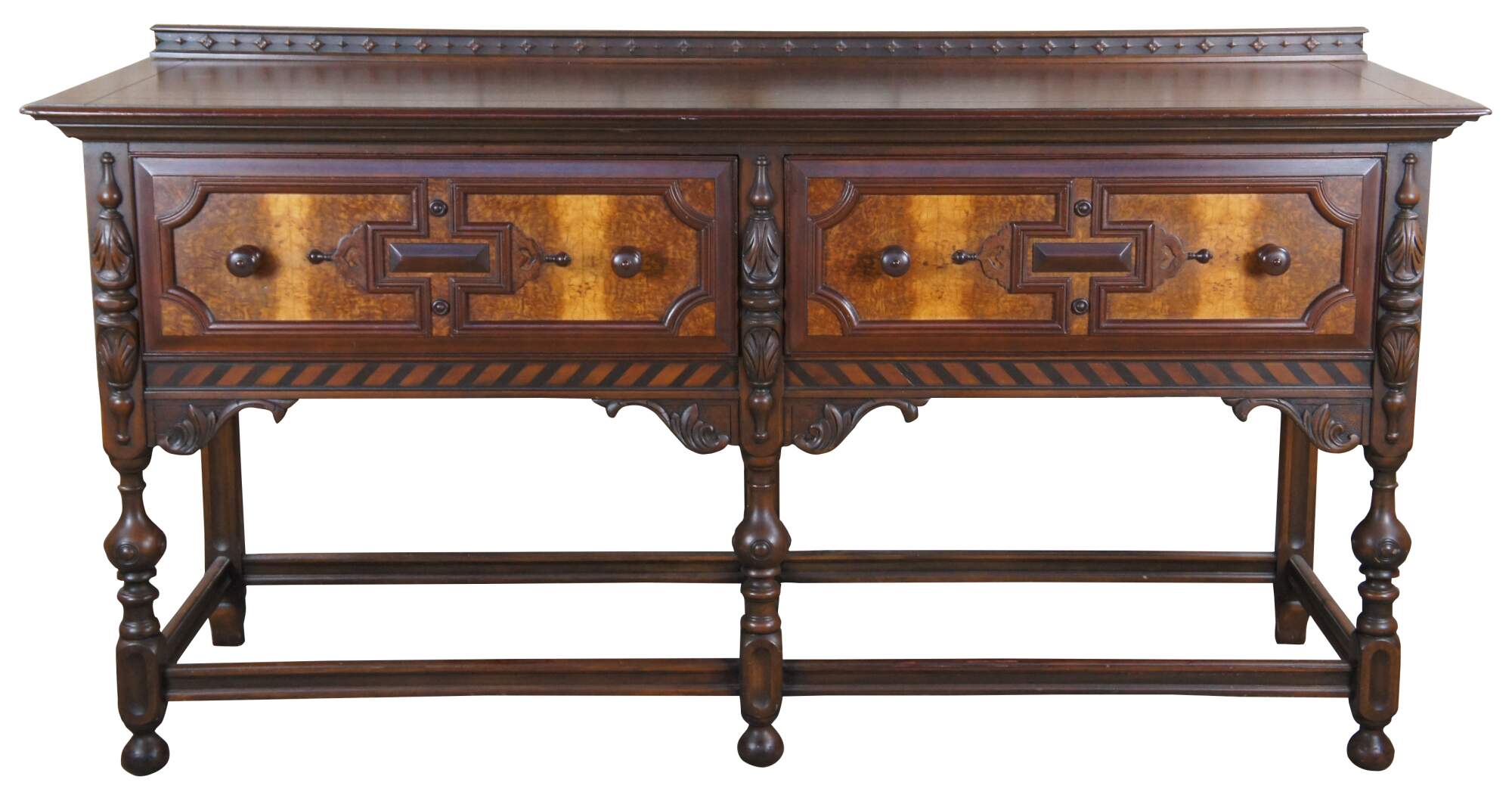
Shipping:
Free Shipping Included
Delivery:
Estimated 2-15 Business Days
Payments:
Credit Card, Check, Cash, PayPal, Apple Pay, Venmo
Returns:
30 Days 100% Money Back Guarantee, Buyer Pays Return Shipping
Description
Antique Berkey & Gay Buffet or Server. A beautiful blend of William & Mary, Jacobean and Gothic styling. circa 1905-1929. Made of walnut featuring matchbook walnut burl panels. The two central drawers exhibit geometric molding, set between acanthus carved quarter cut finials resting over an apron of diagonal striping with lower ""S"" carved spandrals. The sideboard is supported by turned legs along the front with bun feet and straight legs along the rear with a tapered foot. Upper backsplash is removable with diamond carved accents. Interior of the drawer bares Berkey & Gay's first makers mark.
A Breif History of Berkey & Gay Furniture Company
In 1855, William Berkey arrived in Grand Rapids and founded a mill to manufacture window sashes and other wood building products. He was joined by his brother, Julius, who later began manufacturing what became known as the """"Berkey Table.This was highly successful, and soon the Berkey brothers were concentrating on making furniture. The company took on various partners over time, including George W. Gay, who bought an interest in the company in 1866 to form Berkey Bros and Gay. In 1873, William Berkey withdrew from the company, and Julius Berkey and George W. Gay incorporated to form the Berkey & Gay Furniture Company. In 1874, the new company opened their six-story factory, complete with wholesale and retail showrooms, in Grand Rapids. By 1882, this factory covered three city blocks. The company is known for making Victorian furniture.
George W. Gay, although continuing to be involved with Berkey & Gay, also struck out on his own business ventures. One of these was the Oriel Cabinet Company, which he established in 1880. Oriel Cabinet constructed a factory at this site in the 1880s, but the original factory was destroyed by fire in 1890. In 1892, the company constructed a new factory, which continues to occupy the site. Both Oriel Cabinet and Berkey & Gay continued independently until 1911, when the two companies merged. The Oriel factory became Berkey & Gay's Plant No. 1 following the merger, and an addition was immediately made to the plant in 1912. In 1919 the company further expanded the factory 240 feet north along Monroe Avenue.
In 1920, the company merged with the Wallace Furniture Company and the Grand Rapids Upholstery Company to form Consolidated Furniture Companies, but continued to use the trademark Berkey & Gay because of its name recognition. Sales increased in the 1920s and the company aggressively expanded, However, when the Great Depression hit, the company was unable to continue financing their new sites, and was forced to sell to the Chicago-based Simmons Company. Even this was not enough, as Simmons declared bankruptcy in 1931, and the Grand Rapids factories closed their doors. Local stockholders reopened the factory in 1935, and continued production until World War II, when it was converted to wartime needs. After the war, an attempt was made to convert back to furniture production, but the company was again forced to declare bankruptcy in 1948 and closing the factory for good.
The Berkey & Gay Furniture Company used three different types of labels to mark the furniture that they manufactured. The first label was branded into the wood and can often be found inside the drawers of the Berkey & Gay case pieces. Around the year 1900 the branded type label was replaced by a paper label. The brass label was used starting around the 1920's until Berkey and Gay went out of business in the 1940's.
Condition
Good Antique Condition; light wear consistent with age
Dimensions
22" x 72" x 38" / Surface Height - 36" (Width x Depth x Height)